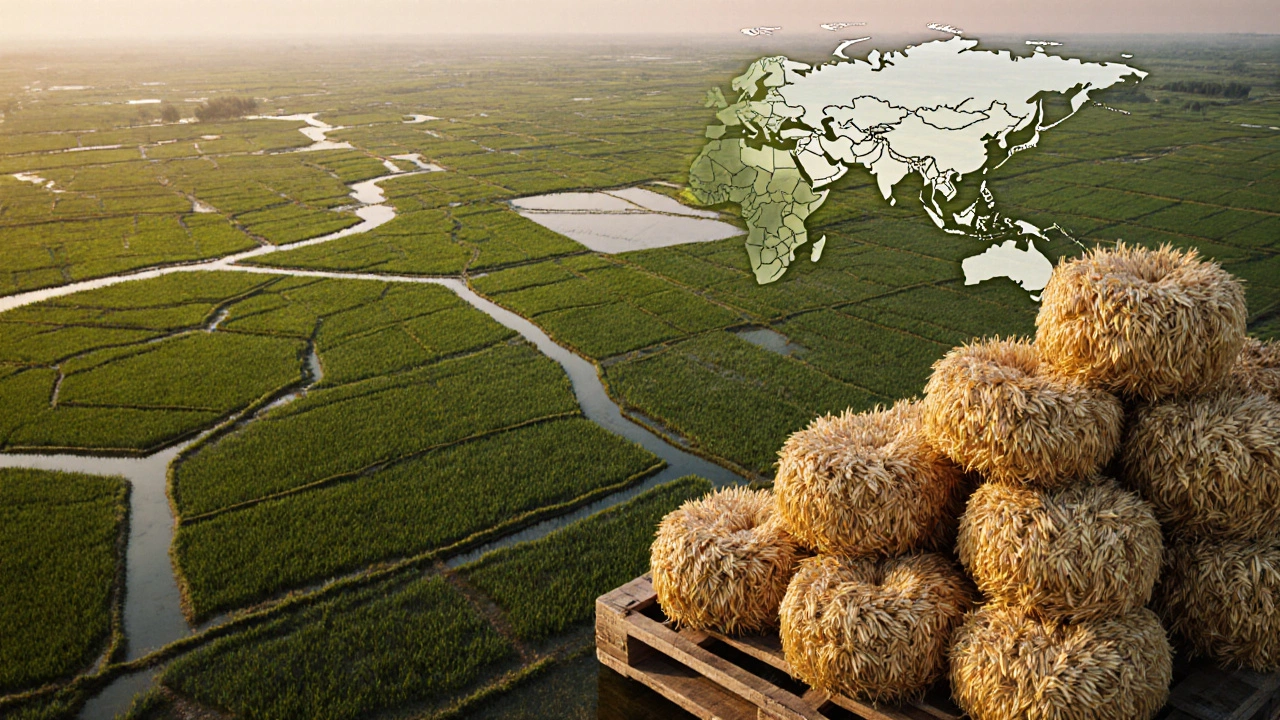paddy field
When planning a paddy field, a shallow, water‑filled plot designed for growing rice. Also known as rice paddies, it relies on a delicate balance of soil, water, and climate. Rice cultivation is the primary activity inside a paddy field, and it demands a specific soil texture, steady water depth, and timely drainage. The field soil type dictates how well water is retained and how nutrients move, while water management controls flood timing, depth, and aeration. Together these elements form the backbone of a successful rice growing system.
Key Aspects of Managing a Paddy Field
The ideal soil for a paddy field is a silty‑clay loam that holds water without becoming too compact. Such soil offers good capillary action, letting water spread evenly across the plot while still allowing root penetration. A simple field test—mixing a handful of soil with water and observing sedimentation—can reveal whether the texture is suitable. If the soil is too sandy, add organic matter or fine clay to improve water holding capacity. Adjusting pH to a neutral range (6.0‑7.0) with lime can prevent nutrient lock‑out and keep rice plants healthy.
Water management is the heartbeat of a paddy field. During the early seedling stage, a shallow flood of 2‑5 cm keeps weeds at bay and protects seedlings from temperature swings. As the plants mature, the depth is raised to 5‑10 cm to ensure adequate oxygen diffusion to roots while still providing the anaerobic conditions rice loves. Controlled drainage before harvest—known as “mid‑season drainage”—helps harden the straw and reduces lodging. Simple tools like a water level gauge and a portable pump make these adjustments easy, even on smallholder plots.
Every rice farmer faces risks, and a well‑run paddy field mitigates many of them. Weather volatility can bring unexpected drought or heavy rain; having a drainage ditch or raised bunds lets you release excess water quickly. Pests such as rice stem borer thrive in stagnant water, so rotating water levels and using neem‑based sprays can keep them in check. Market fluctuations are another concern—diversifying with a secondary crop like mustard on the bunds provides an income buffer.
Choosing the right land goes beyond soil texture. Flat or gently sloping terrain reduces water pooling and makes irrigation more uniform. Conduct a simple land survey: mark the highest point, then measure water spread after a test flood. If water pools beyond the intended area, you may need to re‑grade the field or add contour bunds. Soil testing for nitrogen, phosphorus, and potassium helps you apply the correct fertilizer mix, boosting yields without waste.
Once the field is prepared, focus on planting practices that maximize output. Direct seeding saves labor, but transplanting gives better stand‑establishment in regions with unpredictable rains. Space seedlings 15‑20 cm apart to allow airflow and reduce disease pressure. A balanced fertilizer schedule—starter nitrogen at planting, followed by phosphorus at tillering and potassium at panicle initiation—matches the plant’s growth stages and improves grain quality.
Below you’ll find a curated set of articles that dive deeper into each of these topics. From detailed soil amendment steps to advanced water‑saving irrigation tricks, the posts give you actionable advice you can try tomorrow. Whether you’re setting up your first rice plot or polishing an existing operation, the collection offers practical insights to help your paddy field thrive.
5 Surprising Rice Facts You Should Know
Discover five eye‑opening rice facts covering production, types, water use, nutrition, and modern innovations that keep this staple grain vital worldwide.
About
Rice Cultivation
Latest Posts


Drip Tape vs Drip Line: The Ultimate Guide for Efficient Watering
By Alden Thorne Jul 21, 2025

Discovering the Corpse Flower: Nature's Bizarre Marvel
By Alden Thorne Mar 19, 2025

How Much Rice Does 2 Cups Uncooked Make: A Deep Dive into Rice Cultivation
By Alden Thorne Mar 17, 2025

